A simple guide to calligraphy inks
The selection of calligraphy ink, is a very personal choice. There is no ‘best‘ ink – only the right ink for you and the application for which you want to use it.
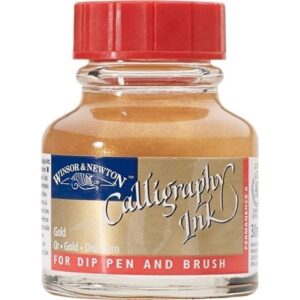
The variety and choice of can be bewildering. A simple guide divides calligraphy inks initially into:
- Inks for Fountain Pens
- Inks for Dip Pens
1. Ink For Fountain Pens
The safest rule with all fountain pens is to use the ink recommended by the pen manufacturer.
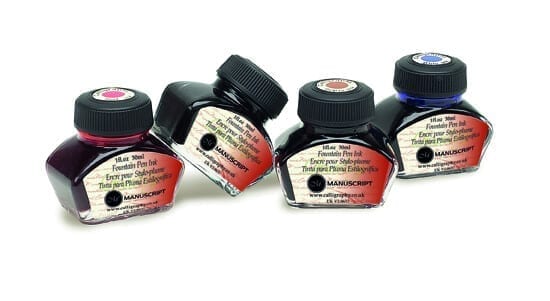
All fountain pen inks are non-waterproof. A fountain pen needs to ‘breathe’, that is allow air into the pen to replace the ink used at the nib. That can allow the ink to dry in the ink feed mechanism. Fountain pen inks tend to dissolve any build up allowing the ink to flow onto the nib. A waterproof ink can dry but not be re-dissolved and the flow of ink to the nib becomes restricted or blocked. (Waterproof inks can be used in some fountain pens but a rigorous cleaning is needed to ensure the flow mechanism is absolutely cleaned. Only an experienced pen user should consider using waterproof inks in a fountain pen)
Fountain pen inks then divide into dye based or pigment based.
Dye based fountain pen inks are thin to aid their consistent flow through the pen and though they are often available in a variety of colours they are essentially ‘fugitive’ and will fade on exposure to light.
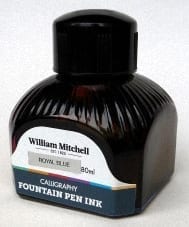
Pigmented fountain pen inks are made from very finely ground pigments that allow the ink to flow through the pen but offer a higher degree of permanency for the finished writing. ‘Permanent’ refers to the lightfastness of the ink – it does not mean waterproof or water resistant and waterproof does not mean permanent.
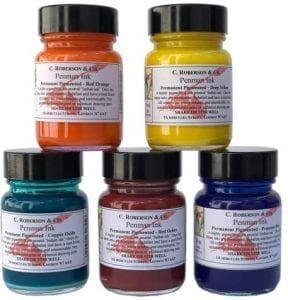
Most fountain pens, even when used with fountain pen inks, will benefit from an occasional flush through with clean water. A filler convertor can be used to draw water into the pen and expelled repeatedly until the water coming out is clear. If the pen is blocked or has been left for a long time it may help to soften any blockage by filling the pen with a solution of washing up liquid and leaving overnight before flushing through repeatedly with clean water.
2. Ink For Dip Pens
Dip pens is perhaps a misleading description as it is usually recommended that pens are not dipped but rather loaded with a brush or dropper. This gives greater control of the amount of ink on the pen. Dip pens allow the use of carbon based, acrylic inks and gouache. Carbon based and pigmented inks are generally permanent and resistant to fading. Gold and Silver inks based on bronze powders can be used. One of the most popular and perhaps favourite calligraphy inks of calligraphers at the moment is Higgins Eternal Ink, a professional dye and pigment ink that dries fast; suitable for dip and fountain pen.
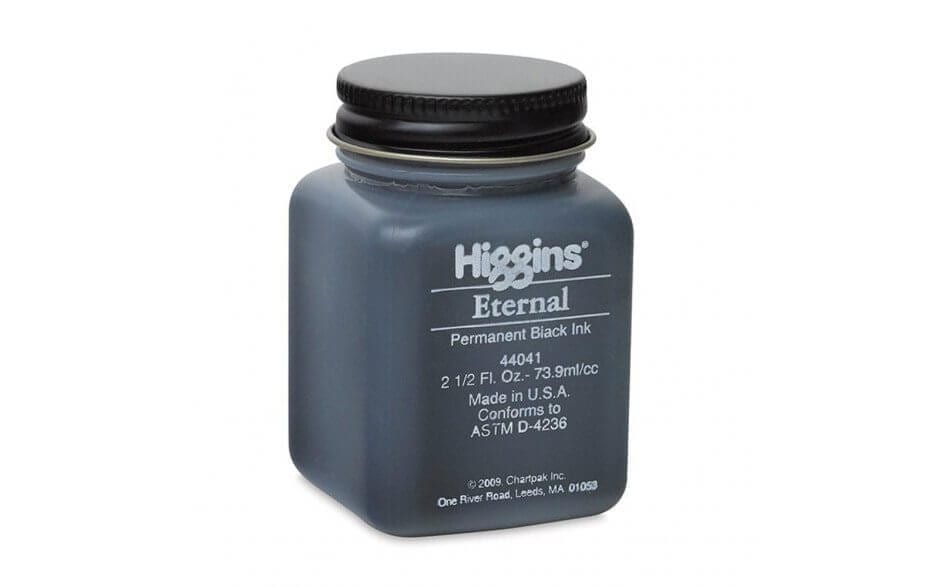
Waterproof or perhaps more accurately, water-resistant inks are often, unnecessarily, avoided as ink can build up on the nib. This risk can be reduced by frequent rinsing and wiping of the nib. Water resistant ink can be ideal for addressing envelopes, the addition of a illustrations and for the general protection of work which may be otherwise unprotected.

Iron Gall Ink is not dye based, carbon or pigment. The ink gains its distinctive dark blue black colour from the chemical interaction of wood tannins with sulphate of iron. It darkens on reaction with air and its acidic nature eats into the paper. It is highly valued by copperplate calligraphers for the fine detail the ink produces. It will eventually turn brown but you will need to wait probably a century for this to happen. Indeed Iron Gall is perhaps one of the oldest calligraphy inks, to still be used today; dating from the medieval period.
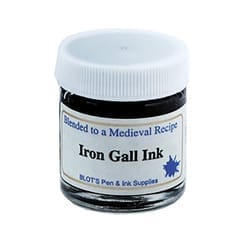
You can find out more about Iron Gall Ink and its’ effects on paper from the New York City Department of Records and Information Services, which has an excellent article on the subject of Iron Gall Ink. Thanks for reading.
